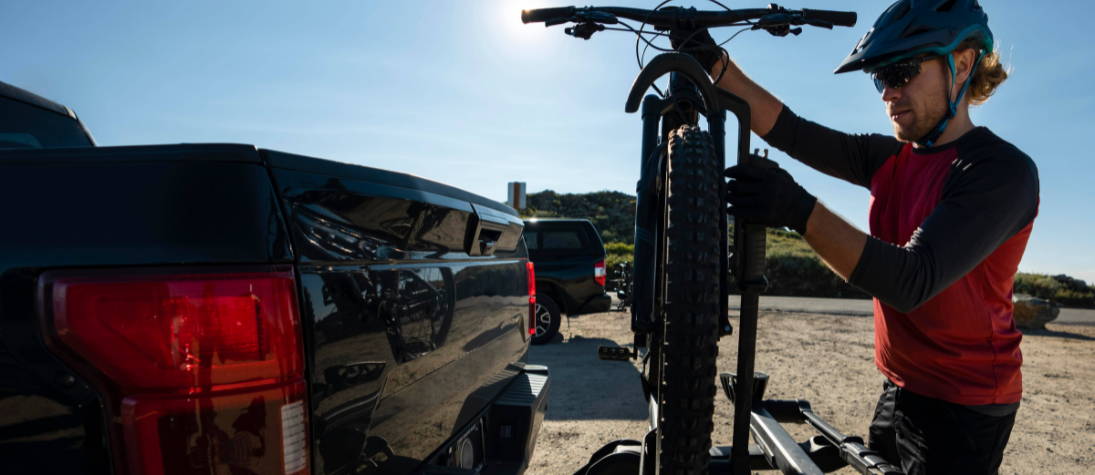Electric bike carrier: how to transport your VAE in the car?

Image Freepik
Carrying your electric bike, or VAE, in your car can seem like a challenge. But with the the right bike carrierit becomes child's play. Whether you're going on vacation, exploring a new route or simply transporting your VAE from point A to point B, a sturdy, safe bike carrier is essential.
In this article, we'll explore the world of electric bike racks. We'll look at aspects such as stability, load capacity, size and weight of the bike carrier, as well as ease of installation and use. We'll also look at how to protect your bike during transport, focusing on items such as straps, hooks and frame and wheel fixing.
So, are you ready to discover how to transport your electric bike safely and easily? Let's get started!
Choosing the right electric bike rack: what you need to know
The weight of an electric bike
E-bikes, or VAEs, are heavier than conventional bicycles, due to their batteries and motors. Their frame tubes are also more imposing. That's why we advise you to use a bike carrier specifically designed for electric bikes. If the product doesn't say "electric bike", it's essential to check the weight the bike rack can support for one bike and/or the total load. A bike carrier designed for a conventional bike may not be able to support the weight of an electric bike, which could result in damage to the bike or vehicle, or even road accidents.
The stability of the electric bike carrier
An electric bike carrier must be sturdy and capable of supporting the weight of the electric bike, which often exceeds 20 kg. What's more, it must offer enhanced stability to compensate for the extra weight of the EAB, especially when riding on winding roads or at high speed on the freeway.
Ease of use
Another thing to check before you buy: your electric bike carrier must be easy to use, both for securing the bike and for installation on the vehicle. It should also offer adequate protection for the bike during transport, thanks to sturdy securing straps and safety hooks for the frame and wheels.
Load capacity
Finally, it's important to know how many EABs you want to carry in total. Some bike racks have only one bike slot, while others can accommodate up to four.
The different types of electric bike carrier
There are different types of bike carrier, depending on where they are installed. Most often, bikes are attached to the rear of the car. But there are other possibilities too. Each type of bike rack has its own advantages and disadvantages, and the choice will depend on your needs, your vehicle and your electric bike.
Electric bike carrier on tailgate
The tailgate-mounted bike carrier is probably the most popular option for many e-bike owners. It attaches directly to your car's tailgate using straps and hooks, making it easy to install and use. This type of bike carrier is particularly suitable for cars without towbars or roof racks. It's ideal for carrying up to two electric bikes.
If you opt for this bike carrier, make sure your EAB is adequately protected against theft. Most rear bike carrier models come with an integrated security system, but it's a good idea to secure your electric bike with an anti-theft device.
Advantages of the electric bike carrier on a tailgate: it's generally less expensive than other types of bike carrier. It's also easy to install and dismantle, making it practical for occasional use.
Disadvantages of the electric bike carrier on the tailgate: the weight of the electric bike can put considerable pressure on your car's tailgate. What's more, access to the trunk may be limited when the bike rack is in place. It's also essential to check the load-bearing capacity of the bike carrier, as not all models are designed to support the weight of an electric bike.
The hitch-mounted electric bike carrier
The hitch-mounted bike carrier is an excellent option if your car is equipped with a trailer hitch. It attaches directly to the hitch, providing extra stability and strength, ideal for transporting heavier electric bikes. It's ideal if you're transporting the whole family's electric bikes!
Advantages of the electric bike carrier on a hitch: it's very stable and can generally support heavier loads than other types of bike carrier. It also provides easy access to your car's trunk. This electric bike carrier is also easy to use: EABs can be attached to the car with just a few simple movements.
Disadvantages of hitch-mounted electric bike carriers : they require a trailer hitch on your car, which can represent an additional cost if you don't already have one. They are also generally more expensive than hatch-mounted bike carriers. When buying a trailer hitch, be sure to check the maximum vertical load.
What is a car's maximum vertical load?
The vertical load indicates the maximum weight that can be loaded on the hitch. In most cases, you'll find this indication next to the hitch base, but it's also sometimes mentioned in the vehicle's papers. The average vertical load on a car is between 45 and 75 kg.
The electric bicycle rack on roof bars
The roof rack is another option for transporting your electric bike in the car. It requires the installation of roof bars, to which the bike carrier is then attached. Roof racks are generally available for estate cars, SUVs and sedans. Before opting for this solution, check the maximum load supported by the bike rack, and also by your car: many models have a maximum roof load of 20 kg. However, commercial electric bikes weigh between 20 and 30 kilos on average, and therefore quickly exceed the permitted roof load. A little tip: if your battery is removable, simply remove it before mounting the electric bike, and you'll save a few kilos.
Advantages of the electric bike carrier on roof bars: it frees up space in the rear of your car, doesn't restrict access to the trunk, and doesn't obstruct the driver's view. It's also very stable.
Disadvantages of the electric bike carrier on roof bars: it requires the installation of roof bars, which can be costly. In addition, loading and unloading your electric bike can be more difficult due to the height of the roof, but also to the heavy weight of an electric bike. Finally, the presence of bicycles on the roof increases air resistance and therefore your fuel consumption.

How do you protect your bike during transport by car?
Transporting your electric bike by car requires special care to ensure its protection. Indeed, improper securing or protection can result in damage to your bike, ranging from simple scratches to more serious damage to essential components such as the frame, wheels or motor. Here are a few tips on how to protect your electric bike during transport.
Secure your electric bike with sturdy straps
On an electric bike carrier, securing straps hold your EAB in place during transport, preventing sudden movements that could cause damage. Make sure the straps are tight and hold the bike firmly against the carrier.
Protect your EAB with safety hooks
Safety hooks play a crucial role in protecting your electric bike during transport by car. They must be securely fastened to the frame and wheels of the EAB, guaranteeing additional stability during transport. Make sure that the hooks are securely in place and cannot come loose during travel.
Secure frame and wheels
Secure the frame of your electric bike to the rack and secure the wheels to prevent movement during transport. Using protective pads can also help prevent scratches and damage to the frame.
Protect the electric bike's other equipment
Finally, don't forget to protect the other components of your EAB, such as handlebars, pedals and brakes. Using protective covers can be a good idea to prevent damage from the elements or road debris. By taking these precautions, you can ensure that your electric bike will arrive at its destination in perfect condition, ready for your next cycling adventure.

Transporting your electric bike by car: what does the law say?
When it comes to transporting an electric bike by car, it's important to be aware of the regulations in force. Although the law makes no distinction between transporting conventional and electric bicycles, certain precautions must be taken to ensure the safety of all road users.
Dismantling small parts
Firstly, it's a good idea to dismantle any small parts that may come loose during transport, especially the electric bike battery. This is particularly important when riding at high speeds, such as on the freeway. Other components, such as the bell, basket and non-integrated lighting, should also be removed if possible.
Visibility for other drivers
Next, it's crucial to ensure that the electric bike doesn't impede the visibility of other drivers. The law stipulates that bicycles must not protrude more than 20 cm on either side of the vehicle.
Visibility of license plate and taillights
Of course, it's imperative that your vehicle's license plate and tail lights are always visible, even when your bike carrier is loaded. If these elements are hidden by the bike carrier or towball, you need to install an additional license plate on top of them, in a clearly visible position.
By following these rules, you can transport your electric bike safely and legally, while avoiding potential fines.
Reference speed when driving with a bicycle rack
Most manufacturers recommend a maximum speed of between 100 and 130 km/h. A fully loaded bike carrier also changes the way the car drives. Adapt your driving behavior and ensure sufficient safety, especially on the first few journeys with your electric bike carrier loaded.
Travelling abroad with an electric bike carrier on your car
In most EU countries, the same provisions apply to driving with a loaded bike rack.
Before you set off abroad, it's a good idea to find out about the regulations in force in these countries for transporting e-bikes and bicycles on a bike rack. In Germany, for example, it is necessary to mount an additional, unstamped license plate on the rear carrier if the rear license plate is not recognizable. In Italy and Spain, a red and white warning sign must be fitted to the rear bike rack.